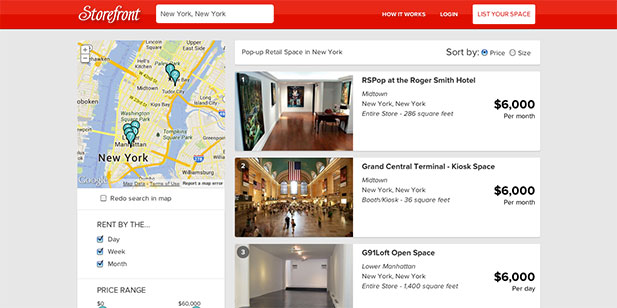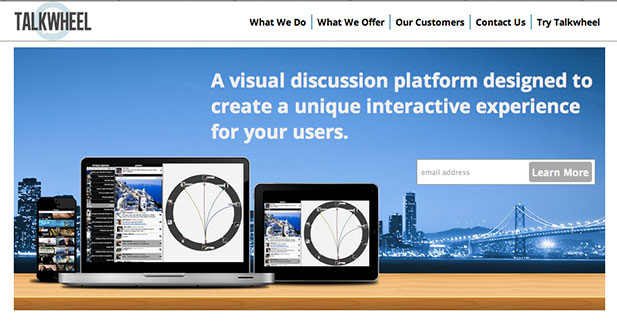When two Minnesota boys set out to help shape the future of retail, they weren’t lacking for inspiration. After all, Minnesota is home to the Mall of America, which includes 4.3 miles of total store front footage. It can hold seven Yankee Stadiums inside its doors with over 520+ stores open for business. Of course, that’s not all it’s known for, but it gives you some perspective into the mindset of Storefront’s founders.
“One is we’re from Minnesota. So the retail mindset is top of mind,” said Erik Eliason, co-founder and CEO of Storefront, when asked about their inspiration. “Having family and friends working at Target, and Tristan worked at Bestbuy.com, I’ve worked in e-commerce before, and we saw how easy it was to launch stores online and get customers. We thought there has to be an easier way for offline.”
So last year, they set out to build it. “It’s still very difficult to open an offline store or setup any kind of presence in the offline world,” said Eliason. “There should be an easier way. And with technology like Square, making it easier to accept payment, we think that finding space should be as easy as setting up your store online.”
They launched their website in March and since have listed over 3 million square feet of retail space, helping over 100 brands open pop-up shops in San Francisco. Once you see their process, you’ll begin to understand why it’s gaining in popularity. Their platform allows you to search for space, easily see what’s around the location, and quickly decide if it’s the right space for a shop, making it easy and more economical for businesses to open physical stores.
“Essentially what we’ve seen retailers do, like lululemon is a huge proponent of this, they use pop-ups to test their market and grow their business in a smarter way,” said Eliason. “So, hey, I want to go to Seattle, well if I’m going to open a store, let’s not spend a couple million dollars, let’s spend $50,000 and test the market and see if consumers support this product.”
And that’s just one possible concept. From a marketing perspective, Storefront is a dream come true because it’s convenient and easy to use. Whether you’re a large retailer looking to test a market or a small business looking to increase revenue with a physical location, Storefront is a handy way to do just that. And, it’s short-term, which minimizes the risk.
A great example of this can be found on their website from a shop called TopShelf Boutique. After not being able to find a space to lease for less than five years, the owner started a fashion truck. However, it wasn’t enough. After disappointing sales in December and January of this past year, she made a change using Storefont. Her objective was to grow topline revenue 30% yearly. Today, she has a 600 square foot retail store that is generating revenue 12 times greater than her rent.
In a world that is going increasingly digital, it’s interesting to see a company doing the reverse. The past few years, retailers have been racing to be online. Now, they’re using the power of online to establish something offline, which makes sense, even if no one is talking about it…Yet.
“People aren’t really talking about the physical world and how brick and mortar retail evolves and changes,” said Eliason. “But, what we see, just like brands online, consumers are now digital natives. If you want convenience and selection, that’s going to be online. But offline offers unique attributes like face-to-face conversation and a tactile experience with the actual product. Things like that, there are a lot of benefits. And now, you can set up a store for a temporary period of time that’s targeted within a neighborhood.”
With approximately 95% of sales still occurring offline (according to Storefront’s website), we’re not the only ones who think it’s a good idea.
Today, Storefront announced it has secured $1.6 million in seed funding from Mohr Davidow Ventures, Great Oaks VC, 500 Startups, David Tisch’s Box Group, Sand Hill Angels, among others. Backed by great investors and having much needed seed funding available, Storefront’s next move is to New York City. Today, you can find anything from a luxury Soho store to a spot in Grand Central Terminal to a space in The Roger Smith hotel lobby.
When asked about the funding, Eliason commented, “It’s pretty exciting. We’re taking it one week at a time, and we’re having a blast.” As far as what’s next, Eliason was tight-lipped, only commenting that they’re looking at another market to open up soon.
While it’s too soon to tell the future of Storefront, there are reasons why they’re finding success. And Eliason’s advice for entrepreneurs? Well, don’t expect the clichéd ‘Never give up’ speech from him. “The biggest thing is decrease cycle times. I know some people think ‘Get shit done.’ But that’s not really driven and concrete,” said Eliason. “Have constraints around shorter cycle times because then you can optimize that. That’s one thing. Another is being open to feedback from others, and filtering, filtering, filtering that feedback. If you talk to 1,000 people that are relevant, that’s great. But there are probably only ten of those people who really are going to matter. So be open to that feedback. It’s hard to see where those people will connect in the future, but they usually do in some regard.”
What do you think? Do two Minnesota-natives have what it takes to change the face of retail? “What we’re trying to do is make opening an offline store as easy as an online store. That’s our overarching goal,” said Eliason at the end of our chat. “That’s my final two-cents.”











